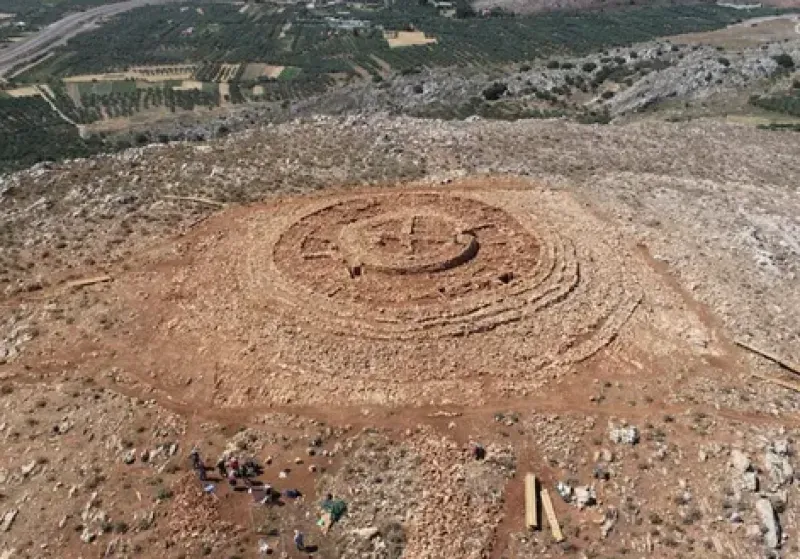What happened to members of the Carlos Castaneda cult?

From Alta magazine: "After moving to Los Angeles, Dee Ann found her guru: the famous writer Carlos Castaneda. She joined his cult and became a witch—as his female followers called themselves—or a chacmool, a word from ancient Mexico for revered statues depicting guardians of the gods. As part of her initiation, she changed her name. She became Kylie Lundahl. Then she disappeared. Days after Castaneda died, in the spring of 1998, Dee Ann and five other chacmools mysteriously vanished. More than 25 years later, they are still missing. Castaneda was among the top-selling authors of the ’70s. The Teachings of Don Juan: A Yaqui Way of Knowledge had started as a thesis project in the early ’60s and became a New Age franchise. The Don Juan series—12 titles in all—is estimated to have sold more than 28 million copies."
Mount Everest is covered in dead bodies and tons of frozen garbage left by climbers

From NPR: "The highest camp on the world's tallest mountain is littered with garbage that is going to take years to clean up, according to a Sherpa who led a team that worked to clear trash and dig up dead bodies frozen for years near Mount Everest's peak. The Nepal government-funded team of soldiers and Sherpas removed 11 tons of garbage, four dead bodies and a skeleton from Everest during this year's climbing season. Ang Babu Sherpa, who led the team of Sherpas, said there could be as much as 40-50 tons of garbage still at South Col, the last camp before climbers make their attempt on the summit. It took two days to dig out one body near the South Col which was frozen in a standing position deep in the ice, he said. Part way through, the team had to retreat to lower camps because of the deteriorating weather, and then resume after it improved. Another body was much higher up at 8,400 meters (27,720 feet) and it took 18 hours to drag it to Camp 2, where a helicopter picked it up."
New York's infamous Sing Sing prison used to have a professional caliber football team

From JSTOR Daily: "In the 1930s, a prison football team was so successful that New York State legislation was enacted to curtail their appeal to fans outside the prison, a concept that may have percolated into other states. On November 15, 1931, the Sing Sing Black Sheep drew a crowd of over 2,000 incarcerated individuals and 500 spectators in their debut win (33-0) over the Ossining Naval Militia. The Black Sheep football team was active from 1931 to 1936 and posted winning seasons every year. Tim Mara, the founder and then-owner of the New York Giants, coached and partially funded the 1931 inaugural team. The Black Sheep were not only unique as one of the nation’s first prison football teams, but also because the team was racially integrated during a time when there were to be no Black players in organized professional football."
(Editor's note: If you like this newsletter, please share it with someone else. And if you really like it, perhaps you could subscribe, or contribute something via my Patreon. Thanks for being a reader!)
What global warming means for northern communities whose culture is based on ice

From Vox: "When Priscilla Frankson thinks about home, she thinks about ice — thick sea ice stretching out toward the horizon. Frankson, an Iñupiaq masters student in Tribal Leadership and Governance at Arizona State University, is from Point Hope (Tikiġaq), Alaska, a small city about 125 miles above the Arctic Circle and one of the northernmost communities in the United States.hen Priscilla Frankson thinks about home, she thinks about ice — thick sea ice stretching out toward the horizon. In Point Hope, where summer temperatures rarely break 60 degrees, ice and cold are a part of life. Thick, reliable sea ice is essential for harvesting whales, a key part of the subsistence diets, a lifestyle built around harvesting wild foods for personal and community use, of Point Hope’s Iñupiaq residents. But climate change is threatening all of this."
Scientists are trying to understand why some people don't have an inner voice

From Scientific American: "Most of us have an “inner voice,” and we tend to assume everybody does, but recent evidence suggests that people vary widely in the extent to which they experience inner speech, from an almost constant patter to a virtual absence of self-talk. A new study shows that not only are these differences real but they also have consequences for our cognition. Participants with weak inner voices did worse at psychological tasks that measure, say, verbal memory than did those with strong inner voices. Psychologists think we use inner speech to assist in various mental functions. Past research suggests inner speech is key in self-regulation and executive functioning, like task-switching, memory and decision-making. Some researchers have even suggested that not having an inner voice may impact areas important for a sense of self. In both experiments the group with less inner speech was less accurate in their responses."
Mysterious 4,000-year-old palace with maze-like walls found on Greek island of Crete

From Live Science: "A 4,000-year-old circular structure discovered on a hilltop in Greece may have been used for ancient Minoan rituals, archaeologists report. Consisting of eight superimposed stone rings with small walls intersecting them to form rooms, the building is almost labyrinthine, representatives from the Greek Ministry of Culture said. The unique structure, which measures 157 feet in diameter, was discovered about 32 miles southeast of Heraklion, the capital of Crete, while construction workers were installing a surveillance radar system for a new airport. Located on the very top of a hill near the town of Kastelli, the ancient building appears to have had two main zones: a circular building with a diameter of 49 feet at the very center and an area radiating out from it. Based on the style of pottery fragments, archaeologists have tentatively dated the building to 2000 to 1700 B.C., in the middle of the Minoan civilization."
Pakistan's hilarious dancing goats
These are Nachi(dancing) goats from Pakistan and this is how they walk. pic.twitter.com/vTEnrninGF
— Nature is Amazing ☘️ (@AMAZlNGNATURE) July 5, 2024
Acknowledgements: I find a lot of these links myself, but I also get some from other newsletters that I rely on as "serendipity engines," such as The Morning News from Rosecrans Baldwin and Andrew Womack, Jodi Ettenberg's Curious About Everything, Dan Lewis's Now I Know, Robert Cottrell and Caroline Crampton's The Browser, Clive Thompson's Linkfest, Noah Brier and Colin Nagy's Why Is This Interesting, Maria Popova's The Marginalian, Sheehan Quirke AKA The Cultural Tutor, the Smithsonian magazine, and JSTOR Daily. If you come across something interesting that you think should be included here, please feel free to email me at mathew @ mathewingram dot com



